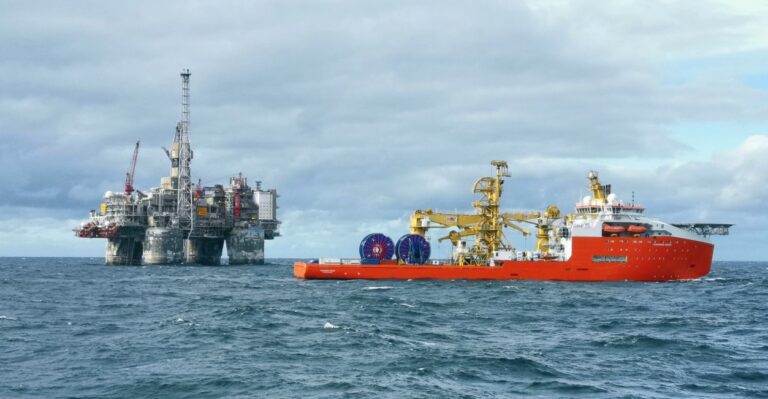Ocean Installer lands work at three oil & gas fields and Northern Lights CO2 pipeline
Marine construction and operations contractor Ocean Installer has been awarded a contract by Norway’s Equinor for a subsea line modification project (SLM) 2023-2025, covering three oil and gas fields on the Norwegian Continental Shelf (NCS) and work related to the Northern Lights CO2 pipeline.

According to Ocean Installer, the SLM project entails riser replacements at the Vigdis, Visund, and Åsgard fields, with engineering expected to start immediately while offshore operations are planned for 2024 along with optional work in 2023 and 2025.
In addition, the scope includes two morgrip connections utilising Equinor’s PRS Spread (Pipe Repair System), one at Vigdis as a part of the riser replacement, and one campaign connecting the shore section from the CO2 receiving terminal in Øygarden with the offshore section of the new Northern Lights CO2 pipeline.
Kevin Murphy, Ocean Installer CEO, commented: “This is our third award from Equinor this year and we are pleased to see that Equinor continues to put their trust in us for executing these highly complex offshore operations. This award adds to our long track record of SLM work with Equinor, going back ten years since the first award in 2013.”
The Vigdis field, which lies in block 34/7 in the Tampen area of the Norwegian sector of the North Sea, produces oil via the Snorre field. When the field came on stream in 1997, it was expected to produce 200 million barrels. Located in the northern part of the North Sea, northeast of the Gullfaks field, the Visund field lies in a water depth of 335 metres. It was discovered in 1986, and the plan for development and operation (PDO) was approved in 1996. The production started in 1999.
The field is developed with a semi-submersible, integrated accommodation, drilling, and processing platform – Visund A – and a subsea facility in the northern part of the field. On the other hand, the Åsgard field, discovered in 1981, is located in the central part of the Norwegian Sea at a water depth of 240-300 metres. After the PDO was approved in 1996, the field was developed with subsea wells tied back to the FPSO Åsgard A.
The development also includes Åsgard B, a floating, semi-submersible facility for gas and condensate processing. The gas centre is connected to a storage vessel for condensate, Åsgard C. The production from Åsgard A began in 1999, while Åsgard B and C came on stream in 2000.
The Northern Lights project, which delivers CO2 transport and storage as a service, is part of Norway’s efforts to develop a full-scale carbon capture and storage value chain. Owned by Equinor, Shell, and TotalEnergies, the onshore and offshore facilities are developed by Equinor on behalf of Northern Lights JV. Phase 1 with a capacity to inject up 1.5 million tonnes of CO2 per year is scheduled to be ready for operation in 2024.
Northern Lights is said to be the first industrial CCS project to develop an open and flexible infrastructure to safely store CO2 from industries across Europe. It is part of the full-scale Longship CCS project that entails the transportation, receipt, and permanent storage of CO2 in a reservoir in the northern North Sea.
Captured and liquefied CO2 from European emitters will be loaded and delivered to the receiving terminal in Øygarden on board two LNG-powered, wind-assisted CO2 transportation ships. By June 2023, all twelve CO2 storage tanks for the Northern Lights carbon capture and storage (CCS) project have been installed at the project’s CO2-receiving facilities in Øygarden, Norway.
“The Northern Light C02 pipeline scope, further demonstrates that our marine construction competence is transferrable to renewables projects – expanding our addressable market,” added Murphy.
Recently, Ocean Installer formalised an alliance with Baker Hughes to deliver an integrated subsea engineering solution said to provide efficiencies from project appraisal through to operations.
Related Article
-
Ocean Installer and Baker Hughes join hands for integrated subsea engineering solution
Business Developments & Projects
This is expected to minimise the total expenditure and delivery time of offshore developments.









